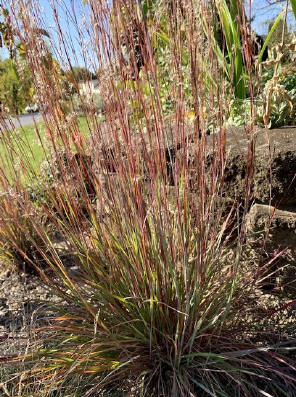(3/20) Dividing plants is an easy way to get more plants for free. I subscribe to Fine Gardening magazine, and always enjoy the comments by Steve Aitken, the editor. Once, when referring to division, he said to imagine you bake a cake. You leave it on the counter overnight, and in the morning it is surrounded by cupcakes! A very clever analogy to plant division. I always remembered it.
What Is Division?
Division of plants simply refers to breaking apart the crown (base) of the plant to get more plants. In this type of division one divided by 4 equals 4. One divided by 8 equals 8.
Reasons To Divide
There are several different reasons to divide a plant. When any perennial grows in one spot for a long time, it tends to slowly get larger, sometimes too large for its spot. Sometimes it can start to crowd itself out causing diminished blooming and dying out in the center. Daffodils are a famous example of this problem. Dividing will rejuvenate the plant. Dividing and replanting sections of the same plant across the garden is a great way to establish continuity in your de-sign. Maybe you would like to give part of the plant to a friend or take it to a plant exchange. Whatever the reason, here’s some things to know.
Check The Weather
It’s always best to work on a cloudy day when it is not windy. Your first priority is to protect the roots from drying out. A cool day in spring is perfect. Plants have hormones that influence how and when best root growth occurs. Most perennials develop vigorous new roots as the soil be-gins to warm in the spring. The ideal soil temperature of 55 degrees works best for most plants’ root development.
Dig It Up
 Use a shovel or a garden fork to loosen the plant from the surrounding soil. A garden fork is good to loosen and untangle the roots. Never dig in wet soil.
Use a shovel or a garden fork to loosen the plant from the surrounding soil. A garden fork is good to loosen and untangle the roots. Never dig in wet soil.
The perennial is best divided when its stems are still short, just emerging in the spring. Many also respond well to being divided in the fall just after you have cut back their foliage. When there are no or few leaves, the plant can concentrate on root development. Be aware that some plants, such as most ornamental grasses develop new roots only in the spring, not fall.
Look carefully at the clump you have dug out. Many times it is easy to simply take hold of the two sides and gently pull it apart into pieces, but depending on the plant, sometimes the crown can be very tightly entwined, and just using your hands may not work. You may be able to place two forks back to back with the tines deep into the root ball, then pull the handles out-ward, thus prying the roots apart. As a last resort, use a spade or ax to cut through.
After you have made your divisions, one section can go back into the same hole, and the others may be planted elsewhere, or given away.
You will find that many plants expand by producing baby plants each having its own small crown. These are called offsets. Often, you can just dig up some of these from along the edges and avoid digging the entire clump. However, if the plant is dying out in the center, it is best to dig the whole thing, get rid of the dead center, and replant a healthy section of the mother plant.
Some plants expand by producing stolons which are like underground roots that grow just be-low the surface of the soil. The stolons have numerous nodes, and at each node they can take root and produce a new plant. These are easily divided by simply cutting the stolon and putting the young plant where you want it.
Once the plant is out of the ground, cover and wet the roots immediately. Dry roots are dead roots!
Replant
It is always a good idea to dig the holes for the new transplants first, and pour water into the hole giving it time to perk through the soil. Do not fertilize your new transplant. The hole for any new transplant, whether a tree or a petunia, should be at least twice as wide as the root ball and not deeper than the root ball. It is very important to spread the roots naturally and not crowd or bend them.
When everything is ready, dig the mother plant, divide, and immediately carry the divisions to their prepared spots. Place the division in its new hole while spreading the roots out, and gently cover with loose soil. Press the soil down firmly but gently to be sure all roots are touching soil, not air. Use your hands, or gently press the soil with a hoe. Water the new plant in immediately.
Keep new transplants watered until they have had time to fully regrow their root system.
A Word Of Caution
Some plants have shrub-like crowns which are brittle and woody, and others develop a single taproot. These will not submit willingly to the type of division we are discussing. Among others, plants in this category include Butterfly weed (Asclepias), Lavender, Amsonia, Baptisia, Cup plant, Russian Sage, and Clematis. Most of these plants will eventually produce "babies" which can easily be dug out and planted elsewhere, or they can be propagated by taking cuttings or by layering.